Ever since taking an incredible family trip to Alaska in my teens and visiting Denali National Park, backpacking through Denali had been near the top of my bucket list. The great majority of park visitors stick to the visitors center, ride the bus through the park, and take short hikes on the few established trails, which let you take in the enormous splendor of the park. You can also opt for a bigger wilderness adventure by obtaining a backcountry permit and taking off deep into the park on foot--that's what I was after.
In 2011, I packed my bags and flew to the last frontier to check it off my list! I went with four other guys: Mark, my high school locker mate and mastermind of this trip; Luis, his Appalachian-region backpacking buddy and seasoned world traveler; and C.J. and Charlie, two eager greenhorns from Georgia. It was a trip I'll never forget!
Luis and I discussing the compartive merits of Shackleton's and Hillary's expedition leadership styles.
Making Our Way Into Denali
We flew into Anchorage, AK and assembled the gang, did a final shakedown, and checked out the outdoor shops to consider any last-minute gear needs. The next day, we hit the road and ended up in Talkeetna, where we stayed in this great little cabin and had a boisterous adventurer's sendoff at the local taverns.
After a big pre-trail night in Talkeetna, I took a quick combat nap while waiting for the bus. The concrete was surprisingly comfortable.
The next day, we headed to the ranger station in Denali National Park to catch a backcountry transport bus--the only way into the interior of the park--that would drop us off in our designated backcountry zone. Generally, private vehicles aren't allowed past the entrance of the park, so driving ourselves to our starting point wasn't an option.
At the ranger station, we first had to go through an extensive, but valuable, check-in and safety talk with the rangers. They went over the current bear situation, how to handle an approaching bear or a bear attack, food storage, camp set up, sleeping, eating, river crossing, and other important notes. They also assigned an area of the park for us to hike. There are no established backcountry trails, but with our area assigned, the rangers at least have an idea of who is located where within the park--so they can prevent overuse and in case they need to send out a search and rescue party. As part of the thorough check-in, we filled out a detailed trip plan with information about each member of our party, including height and weight, boot size, and color of rain gear and tents. While we were eager to hit the trail, it was worth our time to take in the excellent information they provided, and the detailed trip plan was an essential precaution. With ranger check-in checked off, we boarded the bus for our ride into the park.
At the entrance to Denali National Park and ready to hike. Oops..not so fast boys, hours of ranger check-in and bus rides ahead of you.
Mark showing off one of the millions of blueberries we came across in Denali.
The Beauty of Denali
After a few hours of spectacular windshield time on the bus, we were more than ready to start hiking across Denali. We quickly got our packs adjusted and belted on, and we were off.
One of the first things I noticed about Denali was the fragrance of the tundra in the Fall. It's a fantastic scent!
The park was also a visual spectacle. Areas that look like a barren landscape came alive as we walked across them. The incredible patchwork of the various lichens, mosses, and other low plant life, all going through their seasonal changes, provided as much autumnal brilliance as a Vermont mountainside.
Blueberries were in season, and we saw a ton of them. As it turned out, we weren't the only ones interested in the blueberries (oooohh, foreshadowing..).
Double-checking our bushwhacking route through Denali.
Denali Backcountry Camp
The first night setting up camp, we decided to stop and get settled while there was plenty of light. Everyone was feeling their oats and eager to for a serious trek, but we didn't want to run out of light on a rough mountainside, so we stopped on an open ridge our first of several nights out on the trail.
I slept in a single-wall silnylon tarp shelter from MSR (the orange tent in the photos below). It's the no-longer made Twin Peaks shelter, similar to the current Twin Sisters shelter from MSR. This very light and spacious shelter uses my trekking poles for support and doesn't have any floors, zippers, or bug screens--just a basic roof over my head.
If I had it to do over, given what I now know about the relentless Denali winds--especially in the river valleys where we did much of our hiking and camping--I'd rethink the tarp shelters and probably use a standard backpacking tent for a little more protection from the wind and elements. The tarp flapping was incessant, and I ended up with a fine layer of riverbed silt coating everything in the morning. The MSR shelter has served me well on many other trips though. My sleep system consisted of a 35F rated down bag from L.L. Bean, a Sea to Summit bag liner, U.S.G.I. Gore-Tex bivy bag, and my 25-year-old Therm-A-Rest sleeping pad. No complaints. This flexible set-up allowed for comfort over a range of temperatures, and the Therm-A-Rest offered enough cushion on the rocky river beds. The military bivy is bulkier and heavier than some bivy bags made specifically for backpackers, but it is very sturdy, kept my down bag dry and silt-free, and held a bubble of warm air around my bag in the drafty tarp shelter. The Gore-Tex bivy also allowed me to put some of my damp clothes between my pad and bivy while sleeping for a little extra padding, and to dry out from my body heat. I wouldn't want to do that just with a down bag and risk getting the down wet.
Mark also used a lightweight tarp shelter and adopted many ultra-light backpacking techniques and gear items, which made his time under the pack straps more pleasurable. However, I suspect his time in camp wasn't always as comfortable, especially with his single set of trail running shoes. Many ultra-lighters have eschewed traditional hiking boots in favor of very light trail shoes, and they usually don't bring a back-up pair of shoes. The ultralight shoes shave valuable pounds and may be comfortable with a light pack, but I don't recommend this approach for Denali backpacking. With the rugged, make-your-own-trail terrain, you aren't covering as many miles as you would on a normal backpacking trail. You are covering very rough, uneven ground with lots of rocks and brush around your ankles, and you want to make sure you have good footing and toe and ankle protection. After years of playing high-level volleyball, I don't think high tops do much to help prevent sprains, but they do protect the ankles from bad scuffs and abrasions. Also, the soles of your feet can get sore walking on sharp-edged river rocks and stiff-soled boots can help.
At times in Alaska, it's like you're walking on a waterbed, and then there are areas that are a minefield of tossocks, tough mounds of earth and grass, with cold mucky swamp water between them. On moose hunting trips, I've crossed areas that looked wide open, but turned out to be tossock fields, slowing progress to a crawl.
Trekking poles can also be a great help all around, adding balance points, and letting your upper body help share the load on climbs and descents.
In Denali, you'll likely be hiking the river valleys and have many cold water crossings. I wore a pair of liner and thick wool socks, Gore-Tex Timberland hiking boots, and tall gaiters. This system kept me warm and mostly dry. There were some frozen and wet feet for the guys who chose low-cut, non-waterproof trail shoes! There were also one or two nights where Mark looked seriously chilled after multiple river crossings and with the evening temperature drop. Without anything dry to change into, he'd make a quick retreat to his sleeping bag. That said, I think the ultralight approach can work very well in many other conditions, especially in warmer, drier climates. Mark has left me in his dust on many uphill mountain climbs wearing his ultralight shoes, and with his superior triathlete conditioning. He's also said that he's sticking with his trail runners, although he's considering adding a minimalist shoe and Gore-Tex socks for cold water crossings on his return trip to Alaska.
BRFCs make great storage containers and chairs.
Chow Time!
Eating in bear country is a meticulous process that requires vigilance and serious attention to detail--that detail being any bears you may see on the horizon who look like they want your food! Bear-resistant food containers (BRFCs) are mandatory pieces of equipment issued by the park to backcountry hikers to help keep the scent of your food away from any bear's nose, and the substance of the food away from the bear's claws and fangs.
You can see from the photo that BRFCs are not exactly big. They're downright small. There is no way a full-grown man can fit a reasonable amount of grub into one of these things. Well, I guess the other guys did, but hey, I didn't fly all the way out here to starve! For this trip, we each packed our own food to allow for each hiker to satisfy their own palette, and to allow for varying caloric needs due to...umm..size differences.
Campfires are not allowed in the Denali backcountry, so Luis brought his MSR Whisperlite International stove, which four of us used, while Mark used an alcohol stove with caldera cone set-up to prepare his meals very efficiently. At one point, several days in, the Luis' MSR was used to heat small rocks, which were placed in wet boots in an attempt to dry and warm them. It actually worked fairly well. (Luis, a workhorse, and model of good expedition behavior, also happily carried his camera and took many of the photos shown here.) My menu for the trip consisted of the backpacker's standard mix of freeze dried and dehydrated meals with oatmeal for breakfast, but I also brought along a fair amount of solid, ready-to-eat foods. These items are heavier and bulkier, but I know my body, and I knew there would be times when I wanted to get calories in my system quickly. Also, from previous Alaskan backcountry trips, I knew how nasty the weather could be and how quickly it could get that way, so I packed some food items I could eat on the move and then crawl into my bag and bivy up, if need be. So, I crammed my BRFC with calorie-, protein-, and flavor-packed goodies like peanut butter, foil packets of tuna and salmon (these items seemed to make Mark a bit edgy--I made sure to eat them mid-day, while on the trail, and not anywhere near camp), an MRE "entree," along with cheap delicious carbs in the form of Pop-Tarts, Nutter Butters, Oreos, and Cliff bars. A couple crew members subsisted primarily on Ramen noodles, while I was putting away my wilderness comfort food.
Another day in Denali.
Navigating Denali
The next morning was cold and windy, but the incredible panorama quickly helped us forget any minor discomforts.
Without any trails, hiking Denali can be very rough going. Most backpackers in the park hike the river valleys, where the ground is open, level, and clear; however, this presents it's own challenges with very rocky terrain and numerous cold water crossings. For hikers accustomed to trail hiking, navigation can be a challenge. You need to be very good at identifying terrain features both on the map and in real life, and then using your compass to connect the two. There is also a serious magnetic declination difference in Alaska between true north and magnetic north. I brought my Suunto MC-2 compass, and we carefully studied the topo maps. In the end, navigation wasn't all that challenging for us given our route. The park road and the Teklanika River valley formed guardrails for our trip. Our trek was basically an "L," with the short end being us moving from the road up and over a ridge, down to the Teklanika River, and then hanging a right-hand turn and walking up the river valley. Descending into, and then later hiking back out of, the river valley was the most physically challenging part of the trip and the only part where we had any issues finding our way. The mountainside was very steep, and we had to fight our way through a brutal band of alders. At one point, while working through the alder tangle that was well over our heads, C.J. ended up separated from us, and on the other side of a large pond. Not a good situation for many reasons, but primarily because this was prime grizzly habitat we were plowing through!
Mark (left) and I (right) were at opposite ends of the hiking spectrum: Mark took the ultralight route, and I took the traditional route.
After a few hours of working down the mountainside, we made it to the river valley.
The Teklanika River valley was a maze of braids, often with no direct path. Teklanika means "glacier stream" in Athabascan, and it rang true to its name--many of our crossings were in frigid waters.
Bear!
Our first bear sighting was a male black bear several hundred yards above us. We were all excited to see a bear, and even though it wasn't too close, we all kept a watchful eye on him until he wandered off and out of sight. I'd brought a small cheap pair of binoculars which turned out to be very useful on this trip. Without trails, the binocs helped scout potential routes through the brush, scan for bears (for safety reasons), and spot wildlife of all kinds.
Taking a break. Surprisingly comfortable gravel bar.
More Bears!
Not too long after seeing the first black bear, we ran into a mother grizzly and her cubs foraging for blueberries on a sunny hillside (check out the photos below).
One cub took an interest in us and started running down the mountainside toward us, quickly followed by mom and brother. It was incredible how quickly they closed what started out as a 500-yard gap between us. In the photo below, they are no more than 200 yards away from us and still running our way. It only took a second to realize these bears weren't too scared of us, and the "little" guy was very curious to see what we were all about. With our shotgun and canisters of bear spray drawn, we followed the technique we all knew and had been reminded of at the ranger station: we faced the bears, made a human wall, waived our arms, and yelled like our lives depended on it (which may very well have been the case). I'm relieved and happy to say the technique worked. After some consideration, the bears stopped, turned, and walked the other way.
Eating lunch in bear country.
Lunch on the Trail with Bears
After seeing four bears, the idea of bears visiting us for lunch on the trail--not just our campsite--quickly became a reality.
To help prevent bear encounters in our camp or when we were eating on the trail, we always practiced a few basic bear country camping techniques:
Never eat or store food where you sleep.
Take out only the food you plan to eat at one meal from your BRFC and keep the rest locked away, just in case a curious bear shows up. If a bear should decide to invite himself to your lunch, and force you to abandon whatever you're eating, when you are able to later return to camp and retrieve your BRFC, you'll still have all your food except the one meal you had out to eat. (Side note: Denali National Park reports great improvement in bear problems since mandating the use of the BRFCs.)
Eat in the open, stick together, and sit so each member of your party can watch the horizon behind each other for any approaching bears. We also found this set up to be helpful to act as wind breaks for each other.
Consider low scent or cold foods.
Keep your bear spray handy!
Even More Bears!
We saw quite a few animal tracks in the valley on our trail. We also found a boot that was completely shredded and full of bite marks. We never found the other boot...or the hiker who was wearing it.
Our next bear encounter happened a few nights later in camp. After setting up for the night, we saw this sow and her cubs (pictured below) on the mountainside directly behind our camp. It was fun watching them forage the mountainside, but with night approaching, we kept them under careful watch. No one was excited about crawling into their sleeping bag with these guys in the neighborhood.
After about 45 minutes, we decided we'd sleep better if we encouraged them to move on before dusk. It was too late for us to move camp, and we didn't want another curious cub coming down to check us out after dark. While feasting on blueberries, they nonchalantly glanced at us as we yelled and waved in their direction. Finally, mom decided to move them farther down the valley, and we were all able to relax a bit.
Before this trip to Denali, my bear encounters had always been with a single bear. I'm now very aware of the potential for multiple bears in one encounter.
Grizzly Safety
When I talk about this trip with all of the bear sightings, I get lots of questions about safety techniques. I think the first thing to recognize is the varying degree of risk in all wilderness endeavors. Sure, statistically you have a greater chance of being hurt by just driving to a park, but bad bear encounters can--and do--happen. Bear maulings are probably much less frequent than most imagine, but there are numerous instances every year. Authorities usually classify bear behaviors in human encounters as:
Self-defense in reaction to a surprise
"Food-conditioned" bears that approach humans seeking to scare a meal out of them (the human's food, not necessarily the human themselves!)
Predatory attacks by bears hunting humans
If you run into a grizzly, they often react to a surprise close encounter by charging and sometimes resulting in a full attack, although an attack is typically viewed only as a defensive action by the grizzly. Denali's park rangers and other experts say it is crucial to stand your ground and DO NOT run during a grizzly charge. Running often results in an attack, whereas grizzlies usually break off their charge when coming at someone who is holding their position. Instinctively, it would be difficult for many people to not run and to stay put, so it's important to remember: statistics favor the people who held their ground during a grizzly charge. And if you've got other people with you, staying close to your group and making a wall also works to help deter a charging bear from making contact.
In Denali, the park's clean backcountry practices have gone a long way in eliminating typical problems with food-conditioned bears.
Although very rare, predatory black and grizzly bears are obviously extremely dangerous!
Here are some of the precautions we took:
Mark amid the fierce Denali wind.
We consulted with the park rangers extensively before the hike to gather information about local bear activities and any potential problem areas.
We travelled and camped in a group and tried to keep our formation tight while moving through areas with limited visibility. Groups of four or more are recommend by experts.
We stayed alert and watched for bears, both with our naked eyes and using the binoculars to scan the horizon. There were times we modified our route to stay well out of a bear's personal space or a danger zone.
We made noise as we hiked, especially while moving through dense areas likely to be bedding grounds. We did not say "Hey, bear" as is often recommended. We decided that it might be hard to discern between someone actually spotting a bear, and someone just making general noise to prevent surprising a bear. "Coming through" and "hi-yah" were regular calls from our crew. The noise and dense brush in many of the areas we hiked through made it hard for us to hear each other, let alone warn bears a few hundred yards off; nevertheless, we stuck with the practice.
We carried bear spray on our belts, not in our packs, and we practiced the fast draw with it. Bear pepper spray has a good track record of stopping bear charges; however, keep in mind that it is not a fail safe bear stopper. In Denali, the wind NEVER stopped. In the photo above, you can see Mark is wearing a canister of bear spray on his belt. With the Denali winds, there were many instances where bear spray would've been limited to a very, very short range--an uncomfortably short range of probably only a few feet--or blown directly back in our faces. Bear spray may not have been a useful deterrent in that type of a situation.
We followed bear country food and camp considerations as mentioned above.
I brought a gun. Guns automatically bring a negative reaction from some and praise from others. I will say right off that I had no intention of shooting a bear for any reason other than a last resort, I-need-to-protect-myself-from-this-bear-that-is-going-to-kill-me self-defense tactic. Even still, I know that many will quickly cite statistics showing the superior effectiveness of bear spray over guns. And to that, my response is: "Great, where can I get a can?" But you should also consider the fact that those generally cited statistics do not reveal anything about what type of gun was used (if you don't think this is relevant, check the difference in ballistics between a .44 magnum--often carried for bear protection--and a 12-gauge magnum slug), who was shooting the gun, or the nature of the bear encounter. Maybe a gun is more effective than spray? Maybe not? Maybe it depends on the situation? I carried a short-barreled Mossberg 500 12-gauge shotgun loaded with Brenneke Black Magic slugs. Regular slugs are made for thin-skinned deer and may expand and lose energy too quickly against the thick layers of muscle and fat and heavy bones of big bears. This Brenneke load is without a doubt capable of killing a bear; however, the circumstances of each encounter still leave plenty of doubt as to whether a person would be able to effectively get the round off and on target. I've shot a Mossberg pump-action shotgun for decades and the mechanics of it are second nature to me. I felt extremely comfortable and confident with it. So, just as a farmer wears a belt and suspenders, I carried bear spray and a gun--and I'm glad I did. The spray or the gun may have worked better than the other depending on the circumstances, but luckily, I never had to use either.
On my next trip into grizzly country, especially if by canoe or truck, I'll consider bringing a portable electric fence. I've read good things about these fences, and NOLs reports positive results with their effectiveness.
But, don't take my word for it--this is a serious subject! I highly encourage you to read these excellent sources on the subject if you are going into bear country. You'll be better prepared and able to camp with more piece of mind:
Me wearing my Carhartt vest hiking through Denali.
Hot and Cold Hike Out
After a several days on the trail, we had a tough sweaty hike back up and out. I've had plenty of experience Winter camping and backpacking, and I've taught classes on dressing for the cold, but managing clothing on this trip was a real challenge! When hiking on the steep, rugged terrain, I started to sweat and needed to quickly ventilate and shed clothes. But at any stop or pause along the way, I had to quickly zip up and put insulating and shell layers back on to combat the wind. The back and forth never ended. Other than my briefs, I wore the same outfit everyday while awake, but kept a light, clean set of socks, long underwear, and knit cap for sleeping. Ah, the joys of backpacking...
Bull moose we spotted at Wonder Lake Campground in Denali National Park.
I used some unconventional clothing for a backpacking trip. Before getting on the trail, I was worried that it was going to be wetter and colder than the long-range forecast had shown, so I picked up a worn and tattered Carhartt vest at a thrift store in Anchorage for $1 to supplement the clothes I'd brought. Despite not being classic "backpacker" gear, it was great! It blocked the wind, added considerable warmth, and unlike many shell or "puffy" layers, it didn't get torn to shreds in the underbrush. I also brought a pair of thin leather gloves, which really helped when working through the alder thickets and scrambling up and down the rocky slopes. Knowing the potential for extremely wet conditions in Alaska, I had packed fleece as my insulating layer. Fleece was a good choice. While wool is my preference for the northwoods, a warm wool top equal to my fleece would've been heavier and possibly forced me to leave some peanut butter and Oreos behind (bad option). When backpacking in dryer mountain areas, I'll bring a featherweight, high fill count down jacket that offers great warmth and crushes down to the size of a squirrel. The down top has a water resistant coating, but it could've still gotten wet and become worthless on one of the many river crossings. With the fleece, I knew that even if it got soaked, I could wring it out and it would dry and warm up quickly with just my body heat. I brought two sets of long underwear, one was merino wool and the other was polypropylene. I wore the wool during the day because it's more comfortable and doesn't stink like polypro. An Eddie Bauer waterproof breathable shell and rain pants made up my outer layer. They are one of the few manufacturers that offer a good tall size in their outdoor garments. This combination kept me warm, let me thermoregulate, and stood up to the wind, wet, brush, and cold.
My Mors pot served me well while hiking Denali.
Heading Home
After making it back to the park road, we headed for a designated bus stop to take a bus farther into the park to Wonder Lake Campground where we planned to camp one night. Although we waited an hour for the bus, it was fun taking in the scenery of Denali, and we were all able to relax knowing that the really demanding part of the trip was behind us. Everything felt more lighthearted, and C.J. had us rolling with his joking and impressions.
Wonder Lake has an established primitive campground and fantastic views of Denali. Luckily, the bus made a stop at the Eielson Visitor Center, where we all took advantage of the bathroom with hot sink water and soap to clean up a bit. At Wonder Lake, everyone brought out what was left of their trail chow, and we lived it up luxuriating with such niceties as a picnic table and wind break--this was living!
For you bushcraft aficionados, a "Mors pot" and G.I. canteen cup made up my cook kit and worked very well. To fight off dehydration, I got in the habit of drinking a big pot of lemon or orange tea in the evening. Being so cold and windy, it went down much easier than the ice cold river water. In the mornings, I mixed a packet of sugar-filled hot chocolate with a Starbucks Via for a backcountry mocha warm-up.
At Wonder Lake, we took in our first views of Denali. The mountain is often obstructed by clouds, so it was fantastic to finally get some clear views.
We were also visited by this monstrous bull moose during our last night in camp. He hung around for about 20 minutes before he disappeared into the forest.
The next day brought a long and spectacular drive back to the visitors center filled with caribou, mountains, and double rainbows!
We got to Anchorage, and I took a long hot shower before we hit the town for a great Japanese dinner and the wildness of Anchorage's "Taste of Mardi Gras." The next day, we went to Seward, a beautiful seaside town, and visited Exit Glacier.
Experiencing the Denali National Park backcountry was an incredible experience I'll never forget. Anyone who loves wilderness adventure should have a Denali National Park backpacking trip on their bucket list!
Special thanks to Luis and Mark for supplying the photos for this post.


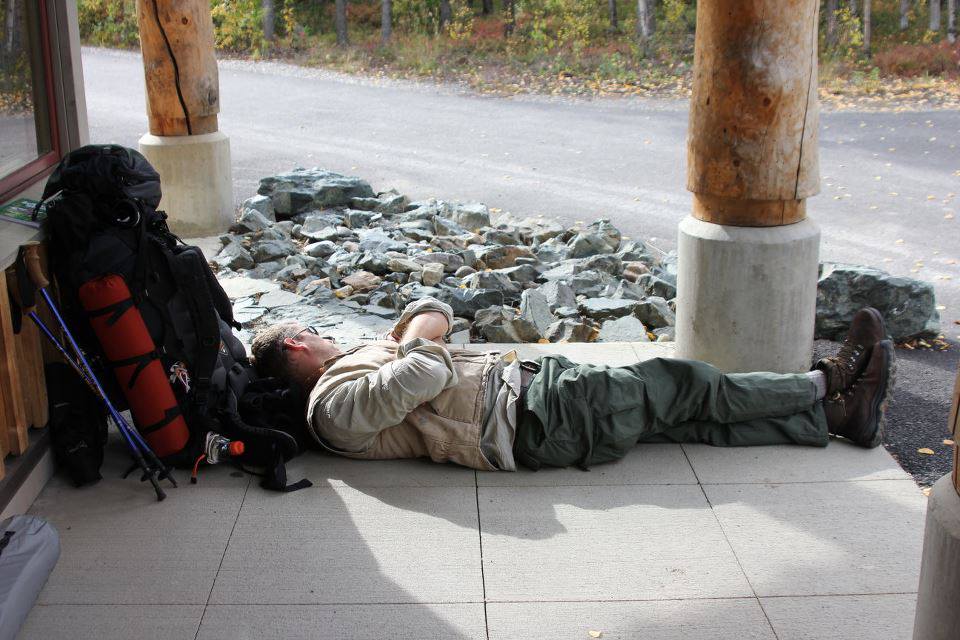
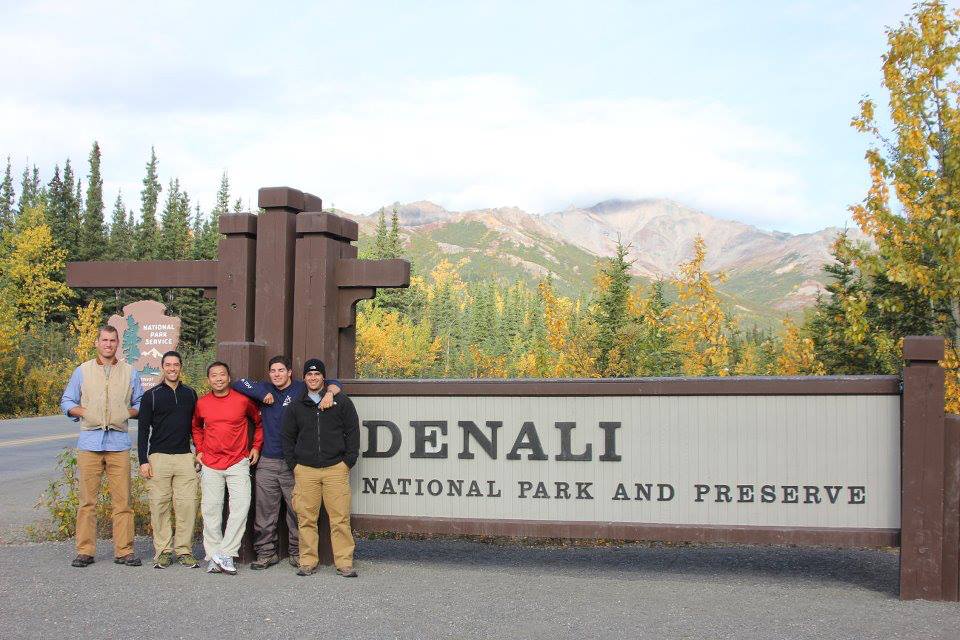


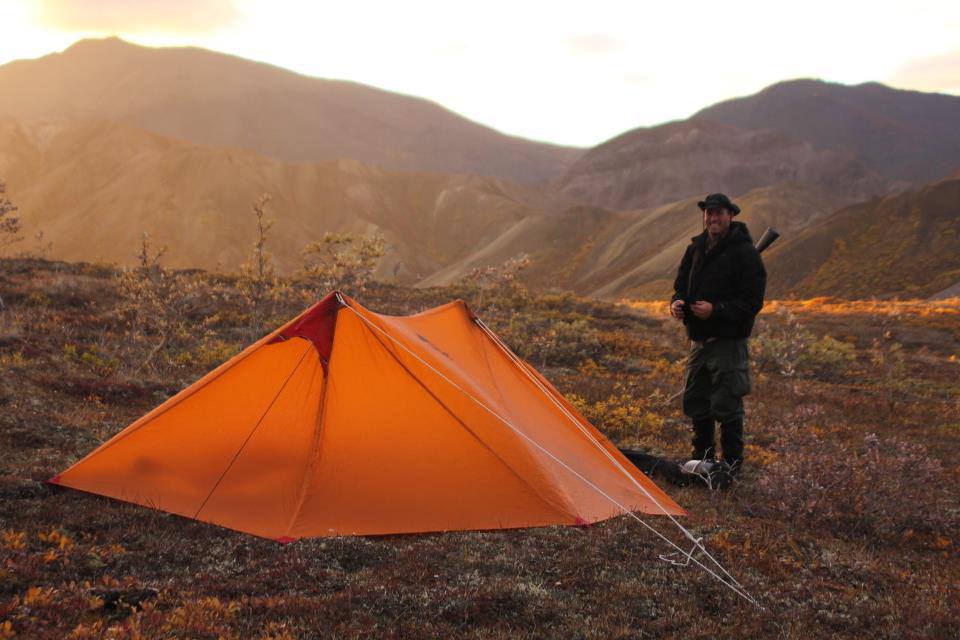
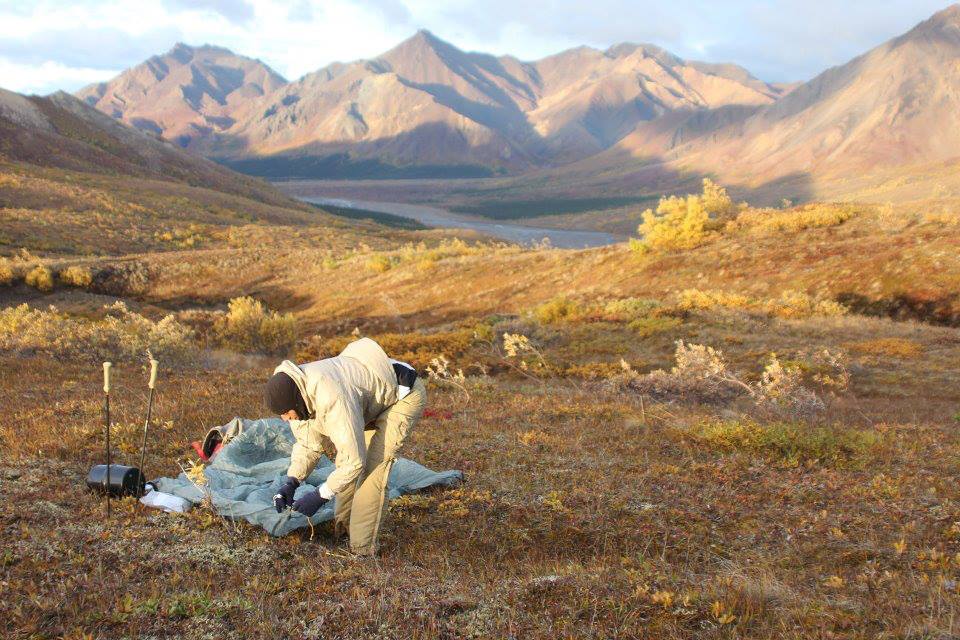
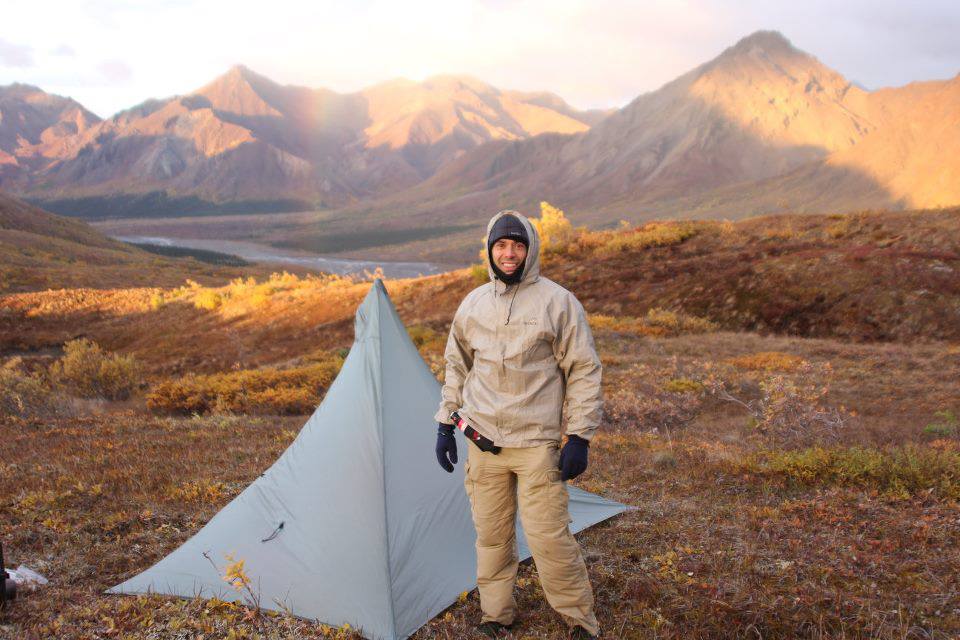



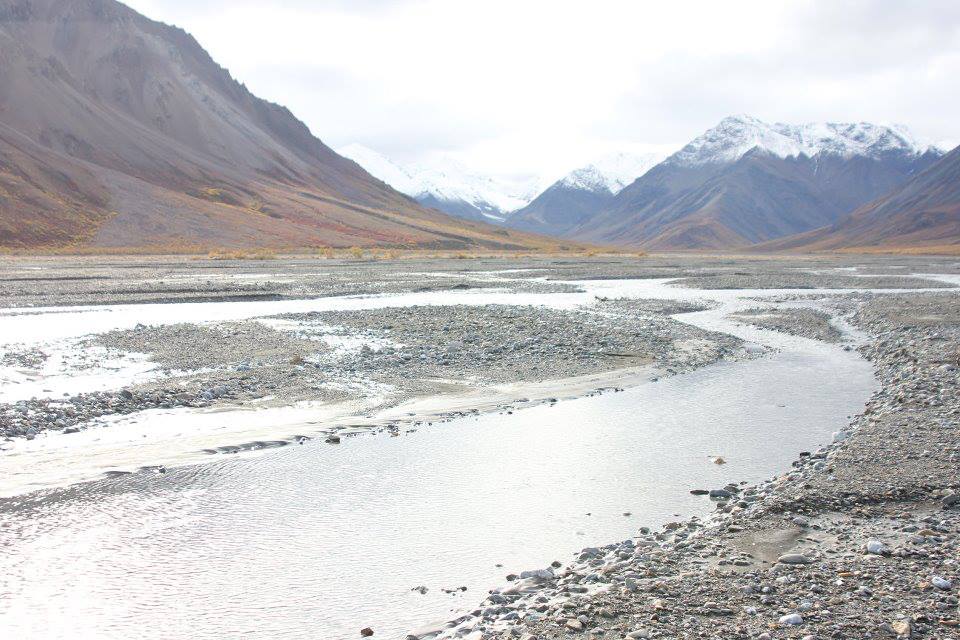

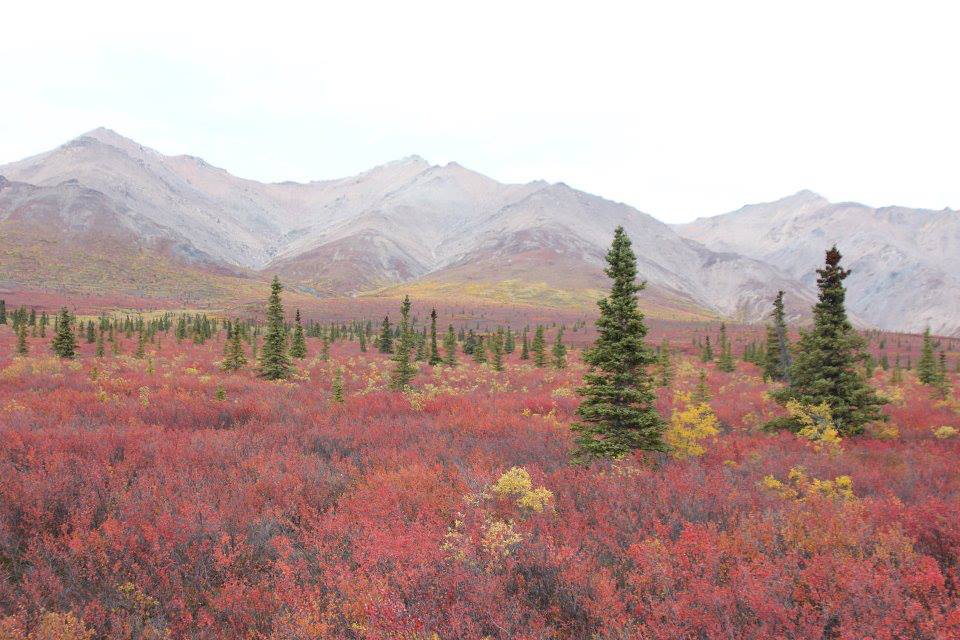
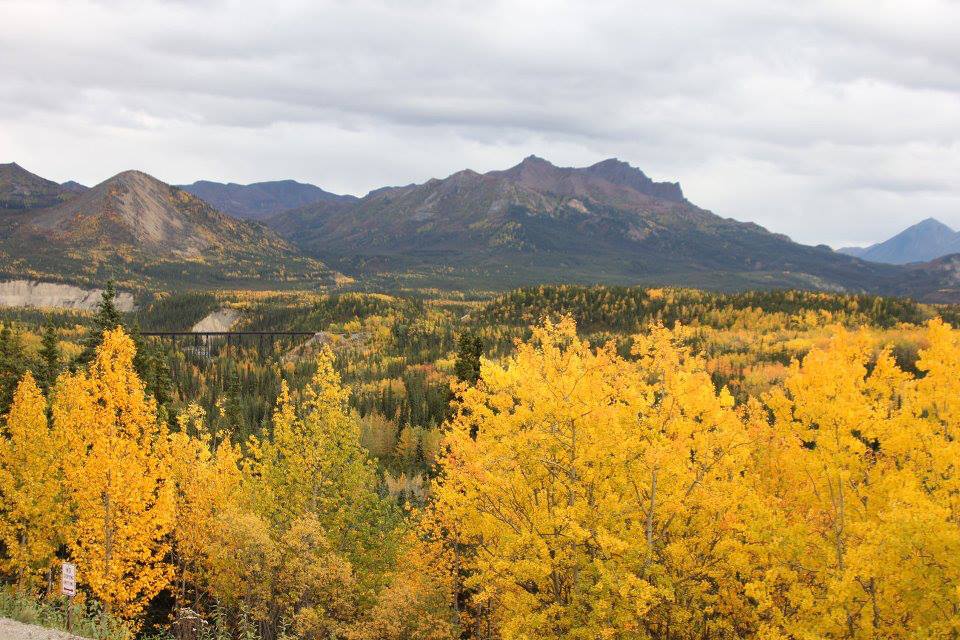


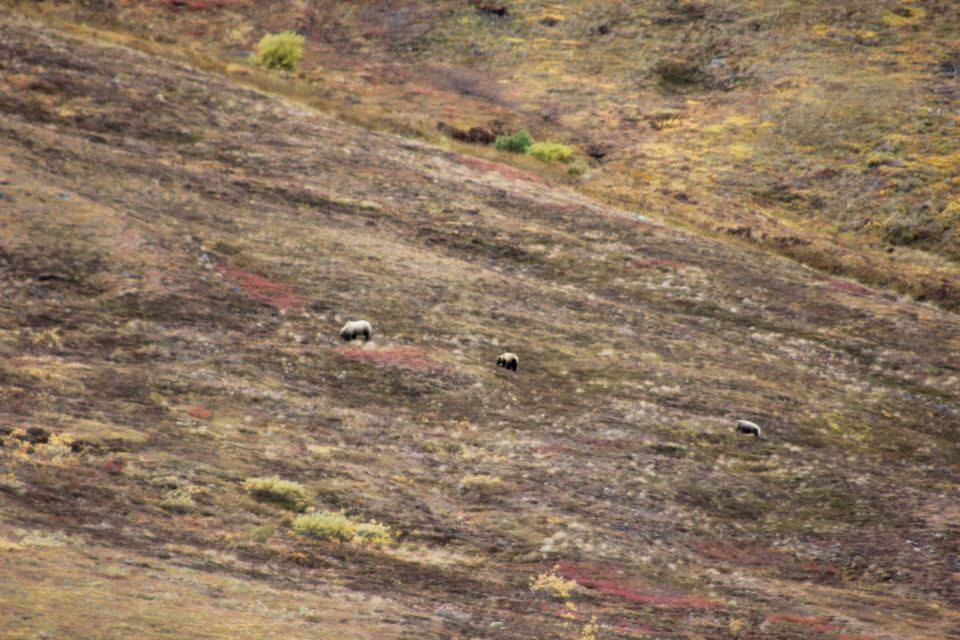
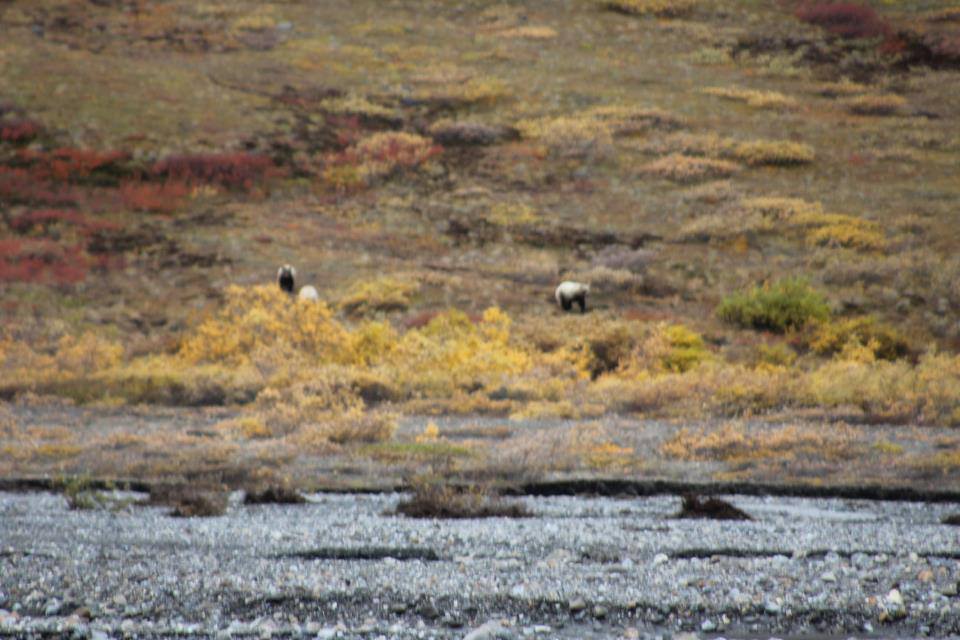

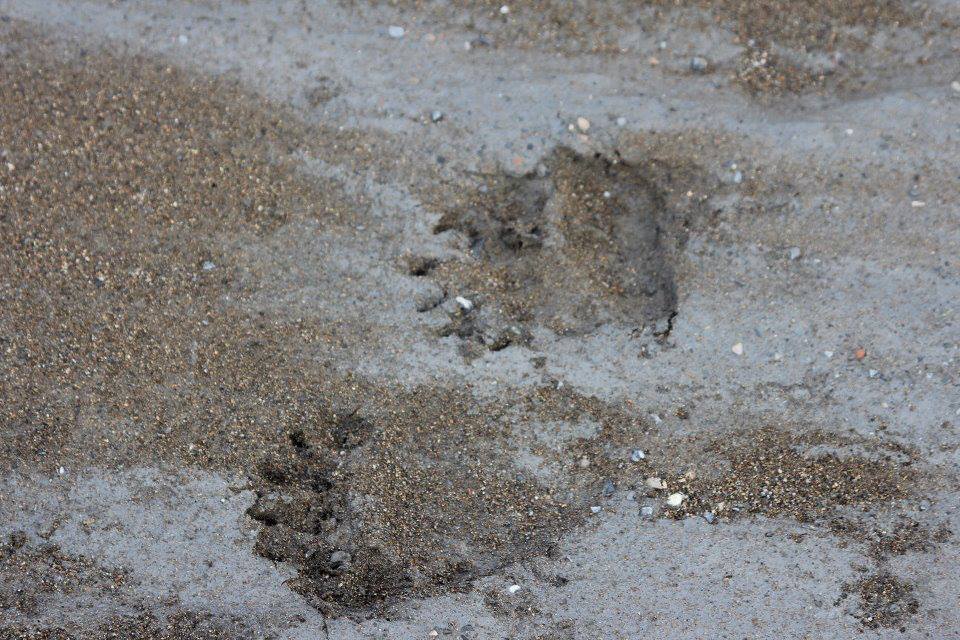
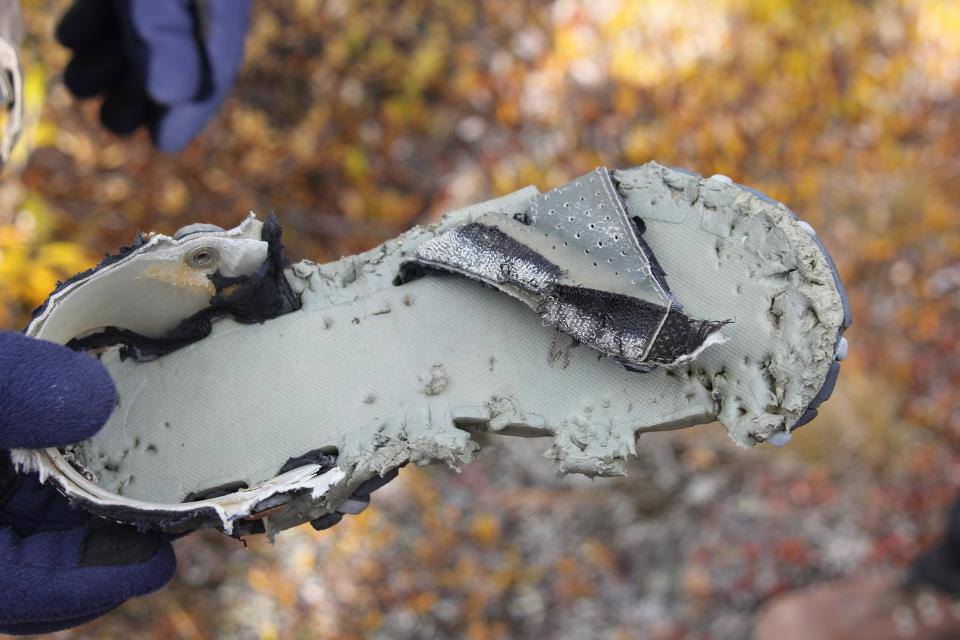

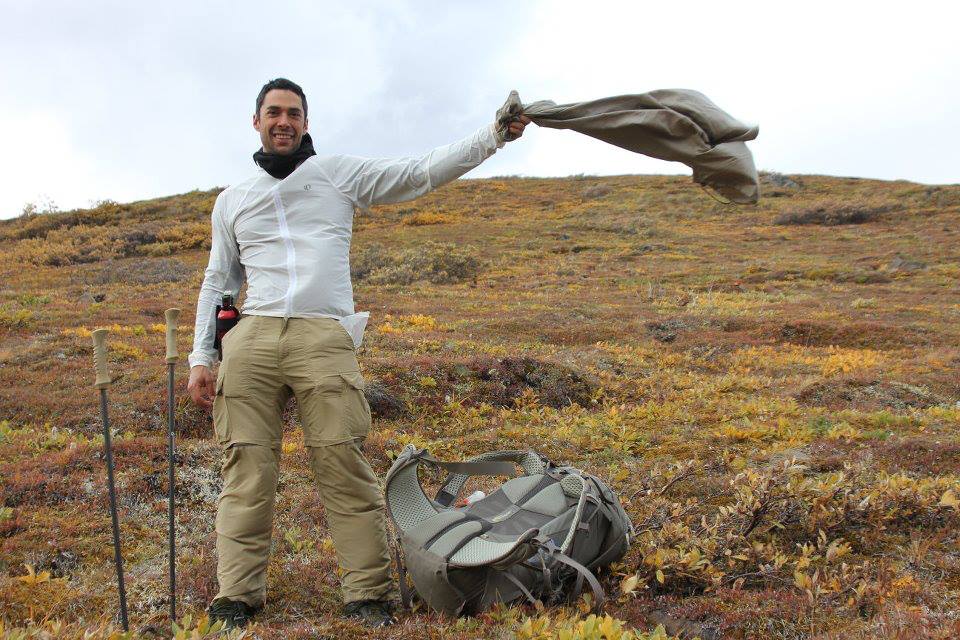



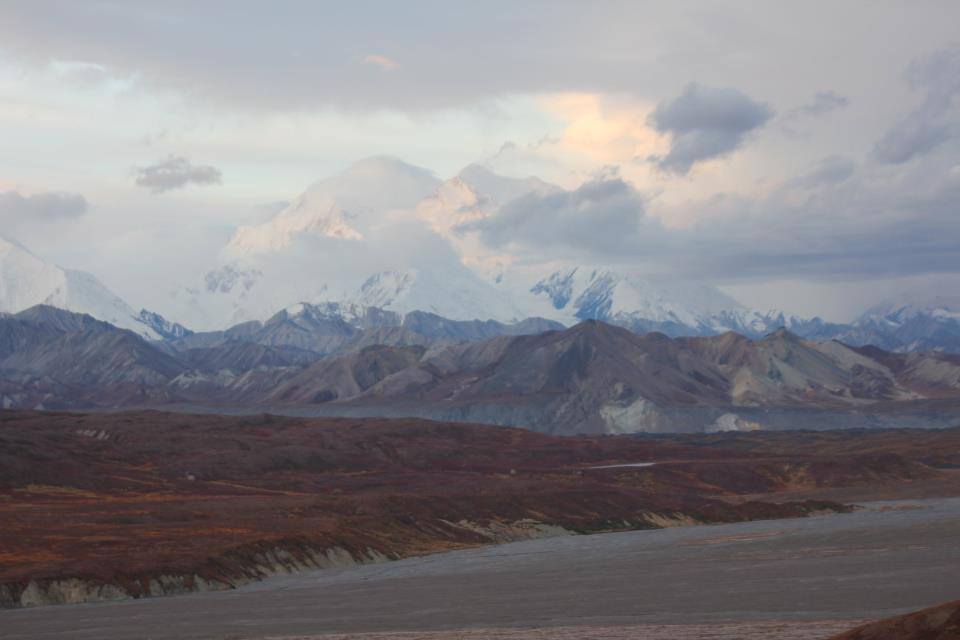
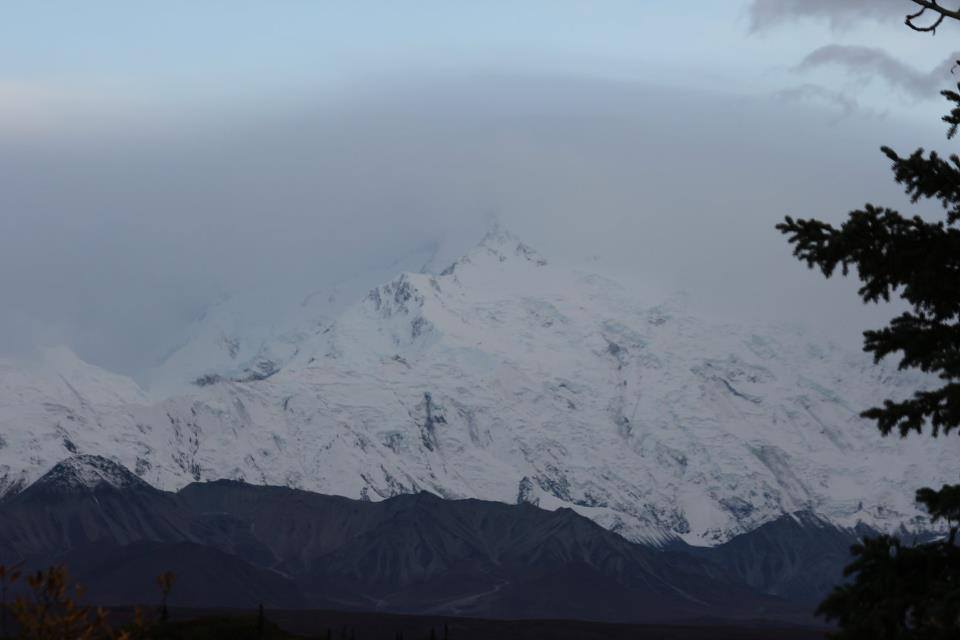
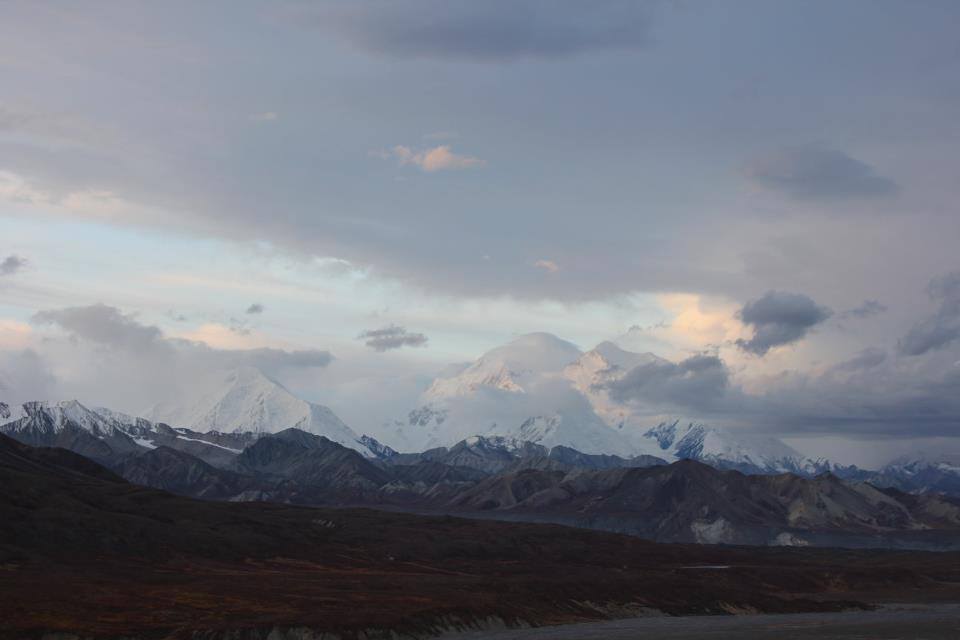

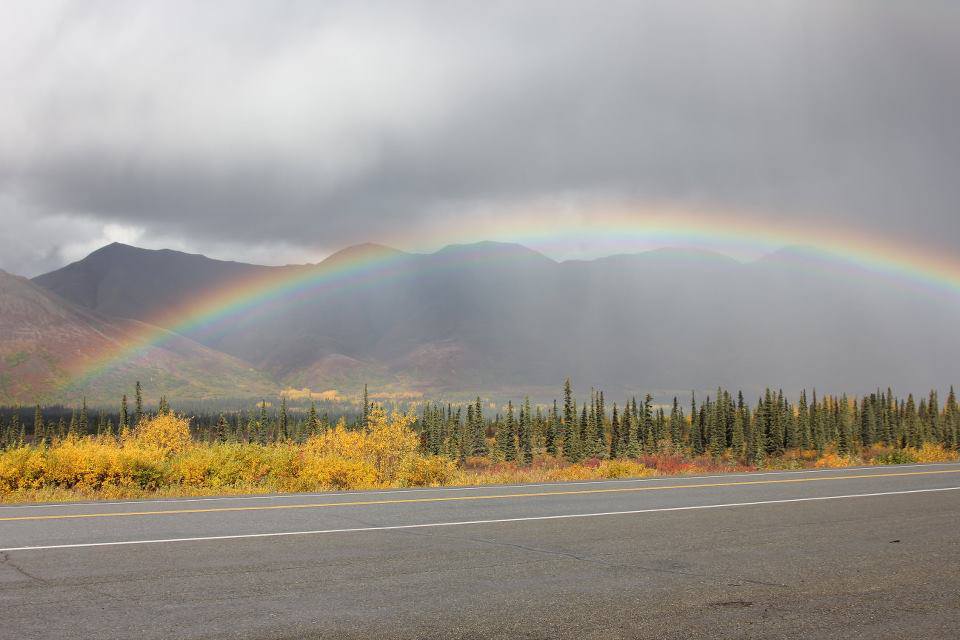
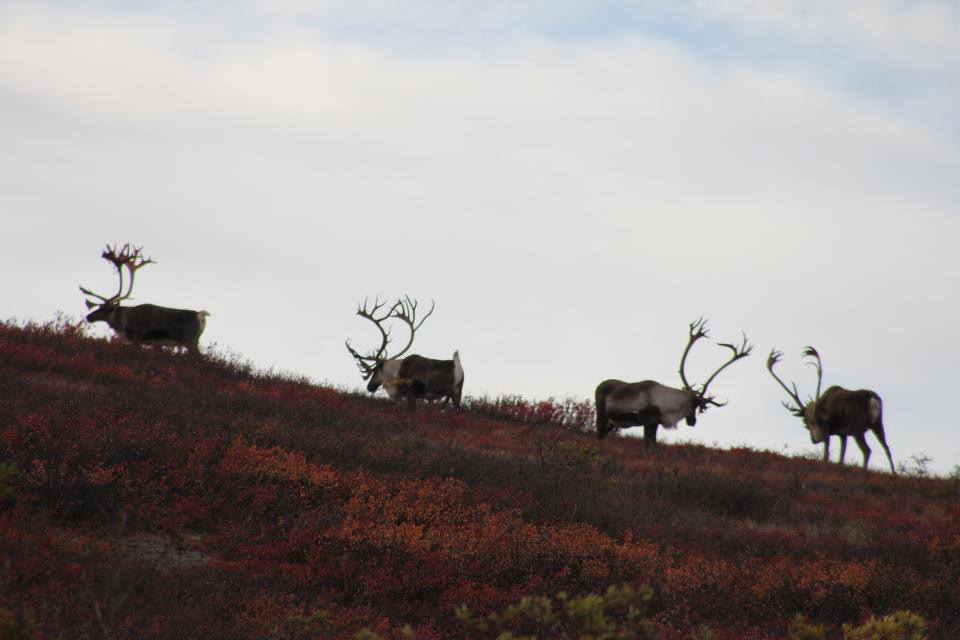

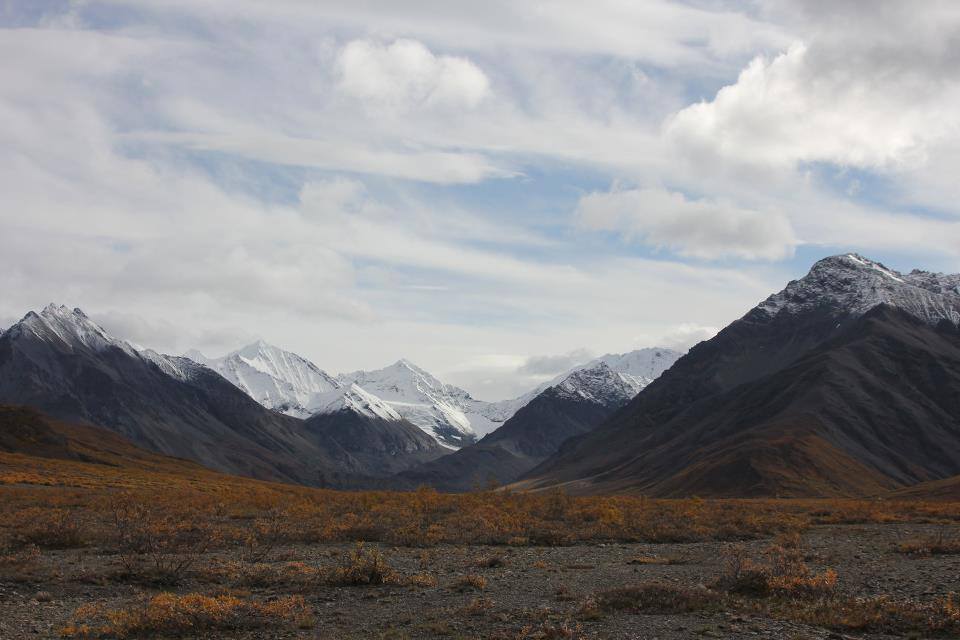

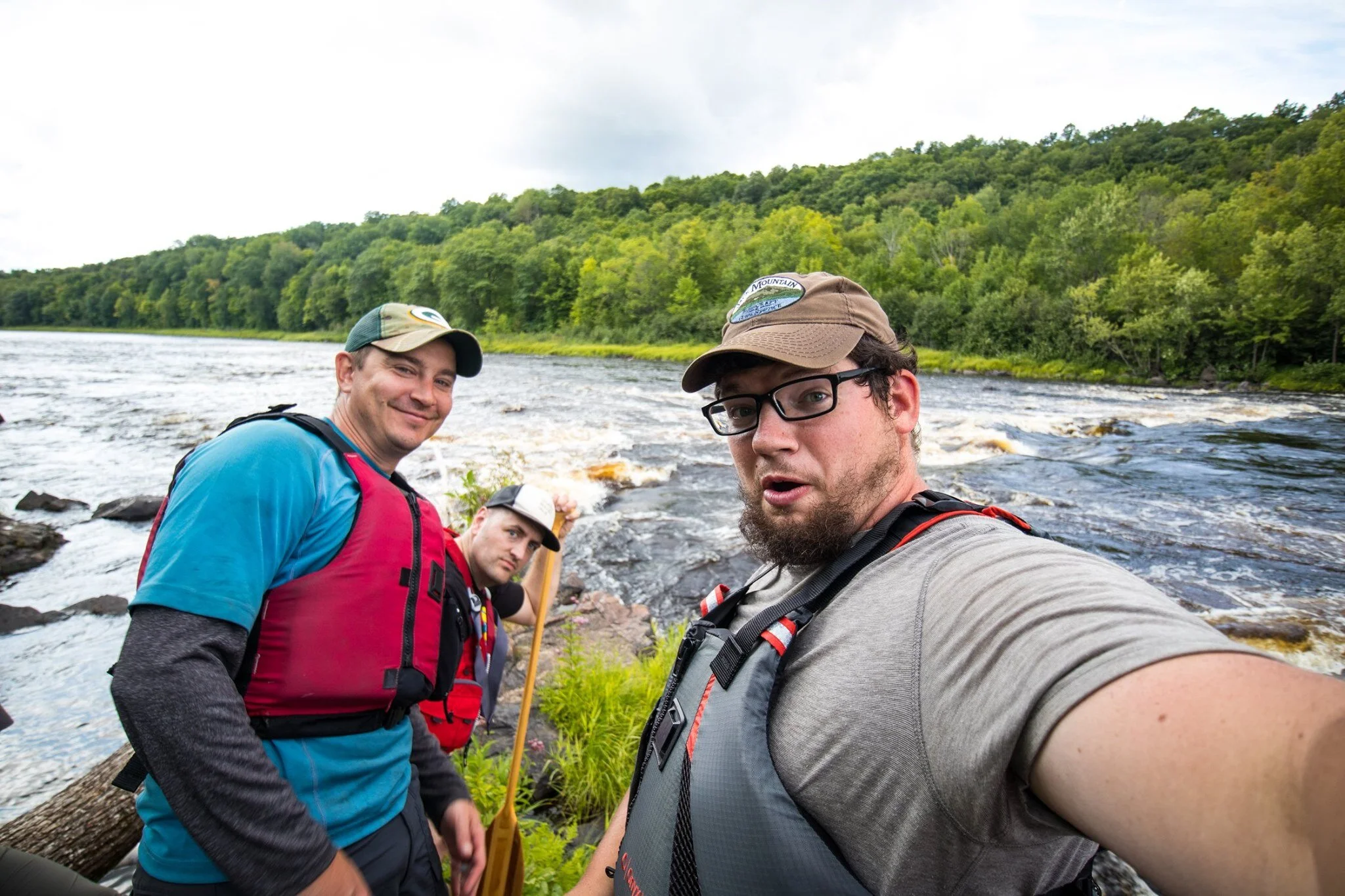
Tim Smith of Jack Mountain Bushcraft, my friend and teacher, recently asked me to join him on his podcast! We talked about balancing our outdoor businesses with a full-time jobs, decision-making in outdoor leadership, and some of the regional differences between Maine and Minnesota and the outdoor skills necessary to thrive in each.